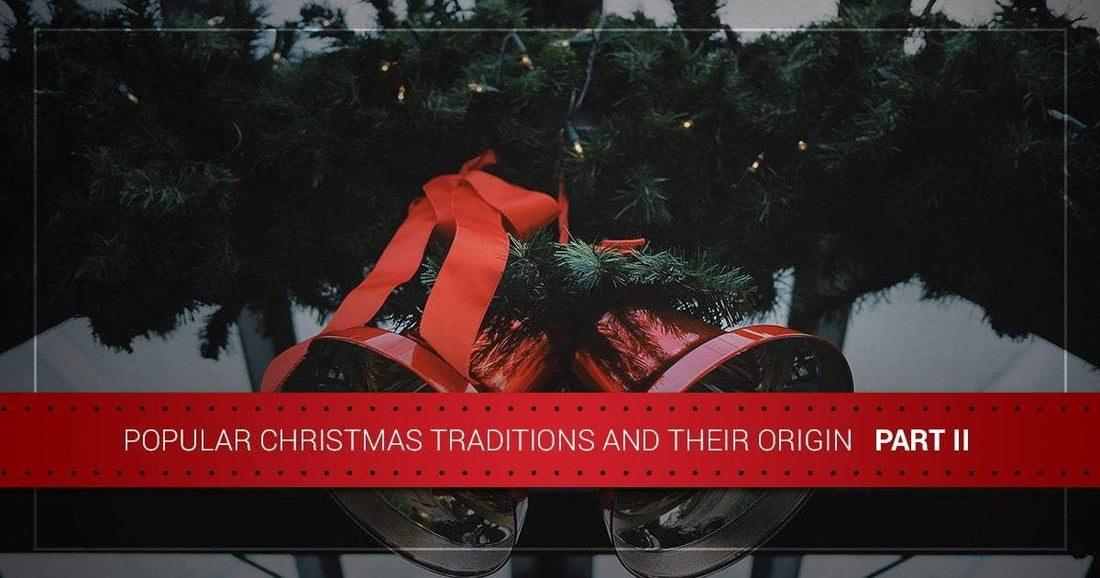
Popular Christmas Traditions and Their Origins — Part II
Share
With Christmas just around the corner, you’re probably beginning to think about the fun traditions that you and your loved ones honor every year. Perhaps you throw a fun caroling party in your neighborhood every Christmas, or maybe you hang stockings on the fireplace in anticipation of Santa coming down the chimney. There are numerous traditions you could be honoring this year, but do you know where they come from? We explored the origins of several popular Christmas traditions in a previous post, and in today’s blog, we’ll continue to provide you with information about the origins of some of the most beloved Christmas customs.
When you’ve finished reading this post, be sure to stop by The Christmas Light Emporium to find an amazing selection of LED Christmas lights and festive decorations!
Advent Calendars
Advent is a religious holiday that has been celebrated since the 300s. It is a four-week event that begins on whichever Sunday is closest to Saint Andrew the Apostle feast day, which takes place on November 30. This year, Advent begins on Sunday, December 2 and ends on Monday, December 24. The history of Advent is rich and complex, but historically, the purpose of Advent was to prepare for the return of Christ. Many people choose to fast and observe Advent in contemporary times, but this period has also been popularized as a countdown to Christmas for secular and religious people alike. It wasn’t until the 1900s that calendars with food and other items were created, and that’s where we get the modern Advent calendar!
Hanging Stockings 
Unlike some of the other traditions we’ve explored thus far, Christmas stockings are one tradition that doesn’t have a well-documented record behind it. Some scholars believe that the tradition may have originated with Saint Nicholas, the patron saint of children. December 5 is the eve of Saint Nicholas’ feast day, and many children in European countries would leave their shoes in front of the fireplace in anticipation of Saint Nicholas arriving to fill them with treats, fruit, and other small gifts. Some children would fill their shoes with hay for Saint Nicholas’ donkey, and this may be where the reindeer in the Santa story originated.
Mistletoe
You know the rule — you have to kiss if you’re caught under the mistletoe! To understand why we honor this tradition today, we need to go back in time and look at mythology around the world. As early as the first century, Celtic Druids viewed mistletoe as a symbol of restoration and fertility due to its ability to survive harsh winter conditions. In Norse mythology, the goddess of love, Frigg, declared that she would kiss anyone who passed under mistletoe, as it was a sacred symbol of love. Mistletoe continued to be seen as a symbol of health, vitality, and love through the ages, and by the 1700s, it had been popularized in England as the Christmas tradition we know and love today.
Christmas Caroling
As a famous elf once said, “The best way to spread Christmas cheer is singing loud for all to hear.” Caroling makes Christmas a truly magical time of year — you get to see beautiful LED Christmas light displays as you walk around, and you may even find that your neighbors give you and your party delicious treats as you make your way through the neighborhood!
Carols have been sung for hundreds of years, but it wasn’t until the early 1800s that door-to-door caroling became popular in England. Going door-to-door with festive songs was a popular component of many British holidays, but it wasn’t until Christmas became popularized that Christmas caroling became a yearly tradition.
Keep an eye on our blog page for the next installment of this ongoing series, and be sure to pick up the LED Christmas lights you need for your home at The Christmas Light Emporium!














